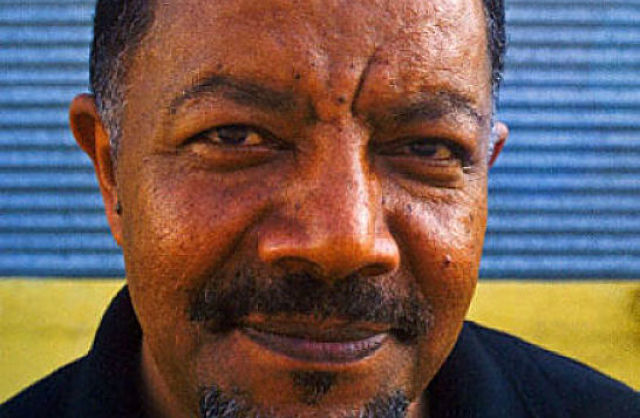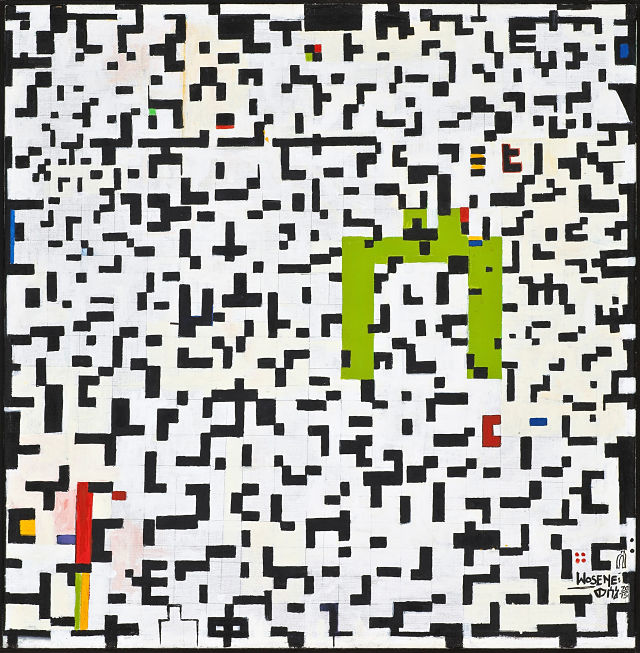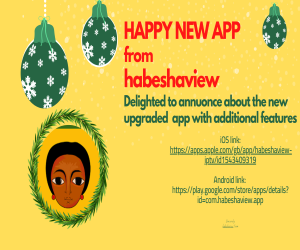 Wosene Worke Kosrof, who lives and has his studio in Berkeley, California, is an Ethiopian-born contemporary artist who has achieved international acclaim. (Photo: Wosene.com)
Wosene Worke Kosrof, who lives and has his studio in Berkeley, California, is an Ethiopian-born contemporary artist who has achieved international acclaim. (Photo: Wosene.com)
Tadias Magazine
By Tadias Staff
Published: Friday, May 27th, 2016
New York (TADIAS) — Renowned Ethiopian painter Wosene Worke Kosrof returns to New York City next week for his latest solo exhibition at Skoto Gallery, one of the oldest and continuously operating galleries in the U.S. specializing in contemporary African art. Wosene’s upcoming show entitled Words: You Are Always New, features his new artwork that will be exhibited from June 2nd through July 30th, 2016. The artist will be present at the reception from 6-8pm on Thursday, June 2nd.
“Wosene Worke Kosrof’s recent work continues his long-standing exploration of the interplay between language, identity, aesthetic beauty and material using the language symbols of Amharic – one of the few ancient written systems in Africa – as a core composition element,” Skoto Gallery said in a press release. “His work is dense with visual complexity that reflects an awareness of a vast array of both formal and inherited traditions. He relieves words of conventional meanings and, instead, explores their aesthetic, sensual, and visual content to speak boldly and clearly to a universal audience.” The press release added: “With Amharic calligraphy, Wosene explores the aesthetic dimensions of the script rather than producing legible text.”
“I am seeking the poetic or artistic value of the fidel or language symbols themselves, and I see my work as visual poetry,” says Wosene. “The writing in my painting does not tell a literal story, but rather a visual story. The Amharic fidel are extremely beautiful and have rhythmic and dancing forms. I ‘choreograph’ them on canvas, I cut them apart, turn them upside down, repeat sections of them to discover the beauty of written language and to think about how we communicate. I communicate with color, line and composition, rather than with sounds, conventional words and literal narratives.”

Painting by Wosene Kosrof. Through My Window III, 2015, acrylic on linen, 26×26 inches. (Skoto Gallery)
Wosene Worke Kosrof was born 1950 in Addis Ababa, Ethiopia and received a BFA from The School of Fine Art, Addis Ababa and a MFA from Howard University, Washington DC in 1980. He is an artist of international reputation, widely exhibited in Africa, Europe, Japan, the US and the Caribbean. Recent exhibitions include the Sharjah Museum Calligraphy Biennial, UAE, 2014; Transformations: Recent Contemporary African Art Acquisitions, Fowler Museum, UCLA, Los Angeles, CA, 2009; Newark Museum, Newark, NJ 2004; National Museum of African Art, Smithsonian Institution, Washington DC 2004; and Seven Stories about Modern Art in Africa, Whitechapel Gallery, London 1995. Collections include the National Museum, Addis Ababa, Ethiopia; The National Museum of African Art, Smithsonian Institution, Washington DC; The Newark Museum, NJ; The Neuberger Museum at Purchase, NY; Birmingham Museum of Art, AL; Indianapolis Museum of Art, IN; the Fowler Museum, UCLA, CA; Samuel P. Harn Museum, University of Florida, Gainesville, FL; and The Voelkerkunde Museum, Zurich, Switzerland as well as many international private and corporate collections.
Artist Statement:
I am the first Ethiopian-born painter to transform Amharic script into contemporary abstract art, and these script-images have now become recognized internationally as my ‘artistic signature.’ Amharic, derived from the ancient language Ge’ez and a major modern language of Ethiopia, is one of the few written systems indigenous to Africa. Though Ethiopia has centuries-old traditions of two-dimensional art that include script, such as Coptic icon paintings underscored by written narratives, the script symbols themselves were never developed as a fine art form.
During the past thirty-five years, I’ve produced five major series of paintings in which I have defined an ‘aesthetics of script’: Graffiti Magic (1980-1987); Africa: The New Alphabet (1988-1994); Color of Words (1995-2003); Words: From Spoken to Seen (2004-2008); and, in my current series WordPlay (2009-present), painting has become an intense process of ‘dialoguing’ with the script images, exploring the versatility and playfulness of their surfaces and interiors, dissecting their ‘skeletal’ structures, observing the ways they move, interact, and intersect. I elongate, distort, invert, dissect, and recombine their shapes and volumes, and turn them inside out to discover their moods, tempers, and personalities. On canvas, the script images are divested of their literal meanings to become gesture, dance, music, movement, and stories of the human drama.
I don’t pre-sketch paintings; my process is inchoate and exploratory: the interplay of accident and intention, of mastery and uncertainty, of curiosity and discovery. Quick-drying acrylics allow me to easily build and destroy colors and figures on canvas. I use a wide-ranging palette, from bold primary colors to muted tones that look almost repellent on my palette, but that smoothly integrate into a composition; to black and white paintings with bare touches of color; to works in several tones of a single color.
Since my student years at the School of Fine Art in Addis Ababa (1967-1972), American jazz has asserted a significant influence on my painting. Like jazz music, the script provides a repertoire of dense, yet supple, elements that lend themselves well to visual improvisation. Jazz also influences my sense of composition: like improvisational music, the language symbols can be juxtaposed on canvas in nonverbal ‘word-plays’ to create a visual language of form and color, rhythm and movement.
—
If You Go:
Skoto Gallery Presents Wosene Kosrof
Recent Paintings: Words: You Are Always New
June 2 – July 30, 2016
529 West 20th Street, 5FL
New York, NY 10011
212-352 8058 or info@skotogallery.com
www.skotogallery.com
Join the conversation on Twitter and Facebook.

























